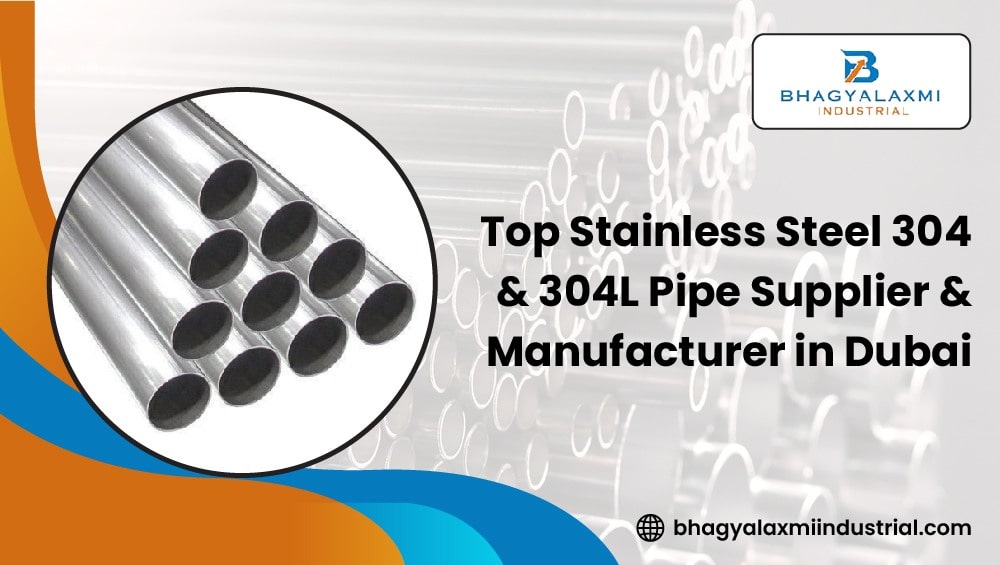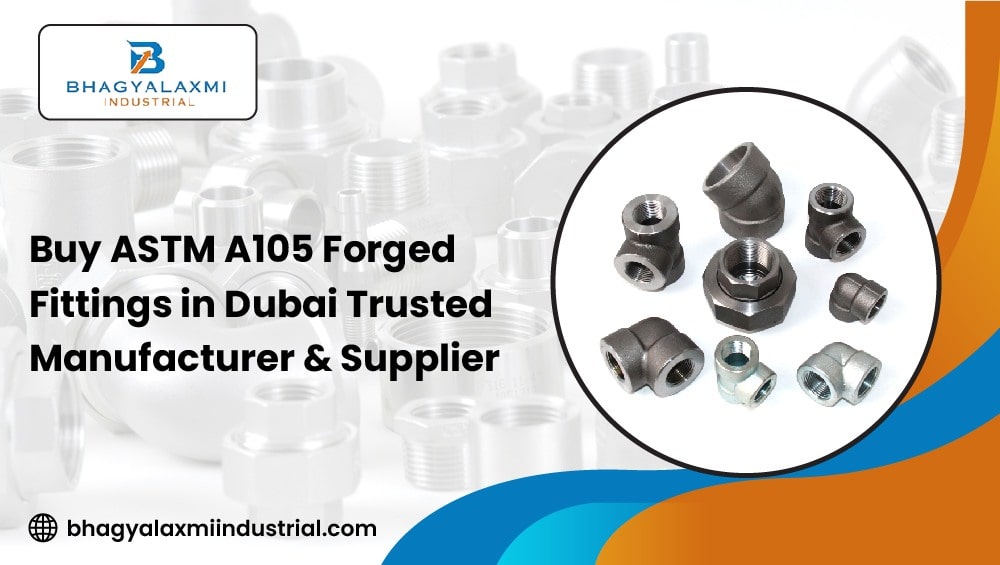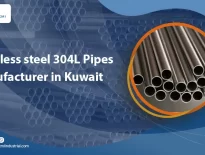Flanges are important components in numerous industrial packages, specifically in piping systems. They provide a dependable approach to attaching pipes, valves, pumps, and different devices to form a piping network. Understanding the exceptional forms of flanges is essential for ensuring the integrity and efficiency of these systems. This complete manual will discover numerous varieties of flanges, and their classifications, dealing with kinds, substances, requirements, and elements to keep in mind when choosing flanges for particular applications.
Common Types of Flanges
Flanges are available in numerous designs, each serving a specific motive. Here, we will delve into the most not unusual types of flanges:
Weld Neck Flanges
Weld neck flanges are designed with an extended tapered hub that offers a clean transition from the flange to the pipe. This type of flange is generally used in high-strain applications because of its electricity and resistance to dishing. The weld neck flange is favored for applications related to high stress, severe temperatures, or dangerous fluids.
Slip-On Flanges
Slip-on flanges are slid over the pipe after which welded both inside and outside to provide power and prevent leakage. These flanges are clean to install and are used in low-stress programs wherein the stress on the flange is minimal. They are a cost-effective desire for plenty of business programs.
Blind Flanges
Blind flanges are used to shut the quit of a piping gadget. They do no longer have a bore and are ideal for checking out the pressure and float of liquids or gases. Blind flanges are vital in systems in which future enlargement is anticipated, as they can be effortlessly eliminated to permit the extension of the pipe.
Lap Joint Flanges
Lap joint flanges are used with stub ends and are useful in structures requiring common dismantling for inspection or cleaning. They are particularly useful to be used in low-strain programs and non-critical environments. The lap joint flange is easy to put in and align.
Socket Weld Flanges
Socket weld flanges are used for small-sized high-stress pipes. The pipe is inserted into the socket after which welded around the outdoors to ensure a leak-evidence connection. This sort of flange is good for systems requiring robust, leak-free joints, together with chemical processing plant life.
Threaded Flanges
Threaded flanges, additionally referred to as screwed flanges, are used in situations in which welding isn’t always viable or sensible. They are screwed onto the pipe, making them smooth to install and dispose of. Threaded flanges are generally used in low-strain packages and in environments in which flammable gases are gift.
Types of Blind Flanges
Blind flanges come in numerous designs to healthy exceptional packages. Some common styles of blind flanges consist of:
- Flat Face Blind Flanges: These flanges have a flat surface and are utilized in low-stress applications where the flat face gives a higher seal.
- Raised Face Blind Flanges: These flanges have a small raised location around the bore, which enables to pay attention the stress on a smaller gasket place, enhancing the seal.
Flange Classifications
Flanges may be categorized based totally on their stress rankings, material, and facing sorts. Understanding these classifications facilitates in choosing the right flange for unique packages.
Pressure Class Ratings
Flanges are labeled primarily based on their strain magnificence scores, which indicate the most strain they can resist. Common pressure elegance scores encompass:
- Class 150: Suitable for low-strain programs.
- Class 300: Used in moderate-strain environments.
- Class 600: Suitable for high-pressure applications.
- Class 900: Used in very excessive-stress systems.
- Class 1500 and 2500: Designed for extremely excessive-pressure packages.
Material Classifications
Flanges are crafted from various materials to match unique commercial necessities. Common substances consist of:
- Carbon Steel: Offers suitable electricity and is cost-powerful.
- Alloy Steel: Provides stronger mechanical homes and resistance to excessive temperatures.
Flange Facing Types
The facing form of a flange is crucial for ensuring a tight seal between connecting components. Different types of flange faces are used depending on the software necessities.
Types of Flange Faces
- Flat Face (FF): The flat face is used whilst the mating flange or valve is also flat-faced. It is common in low-stress applications.
- Raised Face (RF): The raised face is the most common kind, supplying a better seal by way of concentrating stress on the gasket.
- Ring Type Joint (RTJ): Used in high-stress and excessive-temperature environments, the RTJ flange has a grooved floor in which a metal ring gasket is located to ensure a leak-proof seal.
- Tongue and Groove (TandG): These flanges have matching grooves and raised faces that fit together, providing a tight seal.
- Male and Female (MandF): Similar to TandG, these flanges have matching raised and recessed surfaces, ensuring proper alignment and sealing.
Flange Materials and Standards
The choice of flange substances and adherence to requirements is important for making sure the reliability and protection of piping structures.
Types of Flanges and Their Applications
Flanges are utilized in various industries, each requiring specific sorts to satisfy operational desires.
Types of Flanges Used in the Oil and Gas Industry
The oil and gas industry needs flanges that can withstand excessive pressure, temperature, and corrosive environments. Common styles of flanges used in this industry include:
- Weld Neck Flanges: For high-pressure and excessive-temperature applications.
- Blind Flanges: For final the ends of piping structures.
- RTJ Flanges: For ensuring leak-evidence connections in vital programs.
Which Type of Flange Is Used in High-Pressure Services?
High-stress offerings require flanges which could deal with excessive situations. Weld neck flanges and RTJ flanges are typically used in high-stress environments because of their strength and sealing competencies.
Types of Flange Standards
Various standards govern the layout and manufacturing of flanges to ensure compatibility and safety. Some not unusual requirements include:
- ANSI (American National Standards Institute): Provides standards for flanges used within the United States.
- ASME (American Society of Mechanical Engineers): Offers broadly diagnosed requirements for flanges and piping additives.
- DIN (Deutsches Institut für Normung): The German popular for flanges.
- EN (European Norm): The European widespread for flanges.
Factors to Consider When Choosing Flanges
Selecting the proper flange entails considering several elements to make certain top-of-the-line overall performance and safety.
Types of Flange Coupling
Flange couplings are used to connect pipes and ensure the clean transmission of fluids or gases. Different sorts of flange couplings include:
- Rigid Couplings: Provide a set connection between pipes.
- Flexible Couplings: Allow for some motion and versatility, lowering stress at the piping device.
Types of Flange Joints
Flange joints are crucial for making sure of leak-evidence connections. Common forms of flange joints include:
- Butt Weld Joints: Used with weld neck flanges, offering sturdy and dependable connections.
- Lap Joint Connections: Used with lap joint flanges and stub ends, ideal for systems requiring common disassembly.
Types of Flange Connections
Different flange connections are used to match numerous piping requirements. These include:
- Bolted Connections: The maximum common method, is the use of bolts to secure the flanges together.
- Welded Connections: Providing strong and everlasting connections, ideal for excessive-strain programs.
Types of Flange Gasket
Gaskets are important for making sure of a good seal between flanges. Different styles of flange gaskets encompass:
- Spiral Wound Gaskets: Made of a combination of metal and filler cloth, appropriate for excessive strain and excessive temperature programs.
- Ring Gaskets: Used with RTJ flanges, supplying a metallic-to-metallic seal.
- Full-Face Gaskets: Cover the complete flange face, supplying a robust seal in low-strain applications.
Tips for Proper Flange Installation and Maintenance
Proper setup and protection of flanges are crucial for ensuring their sturdiness and general performance.
Installation Tips
- Alignment: Ensure the right alignment of flanges to keep away from strain and capacity leaks.
- Torque: Use the suitable torque whilst tightening bolts to prevent damage to the flange and gasket.
- Gasket Selection: Choose the right gasket fabric for the software to make sure a proper seal.
- Inspection: Regularly check out flanges for signs and symptoms and symptoms of wear and tear, corrosion, or damage.
Maintenance Tips
- Regular Checks: Periodically check flange connections for leaks and put them on.
- Cleaning: Keep flanges clean to save you from corrosion and the buildup of particles.
- Bolt Tension: Check and modify bolt tension as had to keep a decent seal.
- Replacement: Replace damaged or worn flanges and gaskets right away to avoid device screw-ups.
Conclusion
Understanding the one-of-a-kind sorts of flanges is critical for ensuring the integrity and efficiency of piping systems in numerous commercial programs. From weld neck flanges to blind flanges, each type serves a particular cause and is designed to satisfy particular necessities. When choosing flanges, it is crucial to bear in mind elements which include strain rankings, fabric, and dealing with kinds. Proper installation and protection in addition make sure the sturdiness and reliability of flange connections.
For first-rate flanges and other business components, Bhagyalaxmi Industrial is an excellent producer, supplier, stockiest, provider, and exporter. They provide a huge variety of merchandise, along with pipes, tubes, pipe fittings, forged fittings, sheets, plates, coils, bars, rods, and fasteners, in numerous ferrous and non-ferrous metals. Their products meet worldwide quality standards and are to be had in well-known and custom-designed specifications at affordable charges. To make certain reliable and green piping systems, touch Bhagyalaxmi Industrial for all of your flange and commercial thing needs.
By understanding the distinctive styles of flanges and their packages, industries could make knowledgeable choices to beautify the performance and safety of their piping structures.










